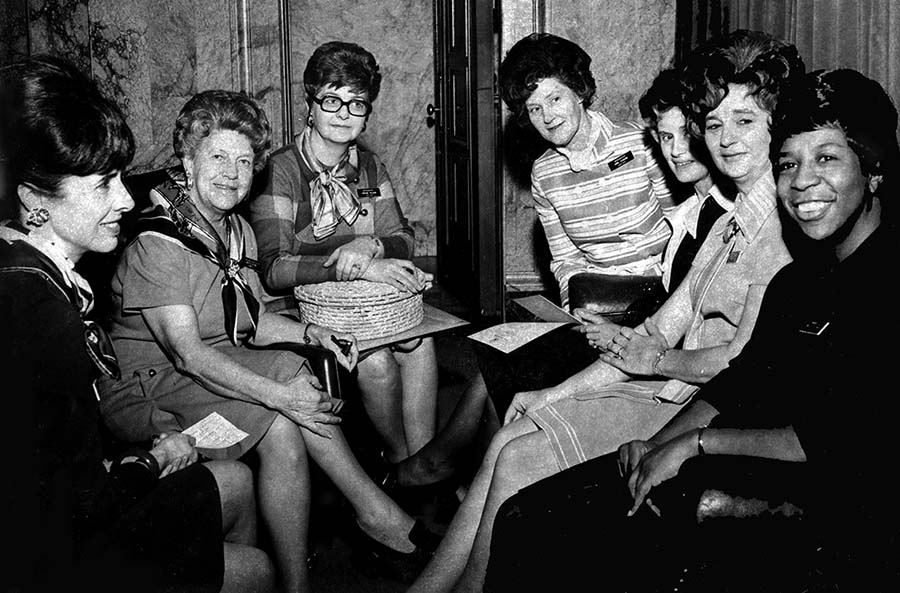
- Virginia Clocksin
- Kathryn Epton
- Phyllis K. Erickson
- Eleanor A. Fortson
- Marian Gleason
- Marjorie B. Happy
- Jeannette Hayner
- Mildred E. Henry
- Margaret Hurley
- Doris J. Johnson
- Marjorie King
- Gladys Kirk
- Marjorie Lynch
- Mary Stuart Lux
- Peggy Joan Maxie
- Mary Ellen McCaffree
- Geraldine McCormick
- Frances Haddon Morgan
- Frances North
- Lois North
- Ann T. O'Donnell
- Ruthe Ridder
- Emma Abbott Ridgway
- Helen Sommers
- Vivien Twidwell
- Georgette Valle
- R. Lorraine Wojahn
1954-1973: The Cold War Era 
The gains made by women in political life were jeopardized as World War II ended and a rocky transition to peacetime began. Washington industries, so heavily oriented to wartime production, faced a battle for survival in the post-war economy. Jobs were scarce and unions scrambled to protect their members, resulting in strikes and work stoppages. Just as women were expected to give up their factory jobs to returning soldiers, so too were they expected to yield public office to battle-tested men.
New attitudes also brought a renewed emphasis on family with an unprecedented marriage and baby boom. Cold War fears may also have driven people to focus on home and hearth, shutting out the dangerous world beyond. A women’s place was in the new domestic haven of the suburbs, where, as prosperity returned, the perfect family life could be safely constructed.
Legislative Discrimination
In the halls of state government, only the women who were well entrenched remained in office, and newcomers faced almost insurmountable odds in winning elections. Julia Butler Hansen, for example, who was first elected by Cowlitz County voters in 1938, had shown herself to be a formidable legislator, controlling much important state transportation development through her position as head of the Highway Committee. Yet she and several other long-term colleagues believed that there was a discriminatory attitude toward women in the Washington Legislature. As Hansen perceived it: "There were 99 members and four women…95 of those men would just as soon seen you pitched out." And Margaret Hurley, who beat the odds and won election from her Eastern Washington district in 1952, agreed: "It was discriminatory. I’d have to admit it. Men did not want you in the decision-making end of it."
Most women legislators had to work harder than their male counterparts to prove themselves, and many did. Hurley was elected to 14 terms in the House before moving on to the Senate for two more terms. Julia Butler Hansen won a seat in 1960 as a member of the U.S. House of Representatives from the Third District.
-
Photo
- Women legislators used the ladies lounge as an impromptu meeting place. From left to right: Margaret Hurley, Gladys Kirk, Lorraine Wojahn, Doris Johnson, Lois North, Geraldine McCormick, Peggy Maxie.